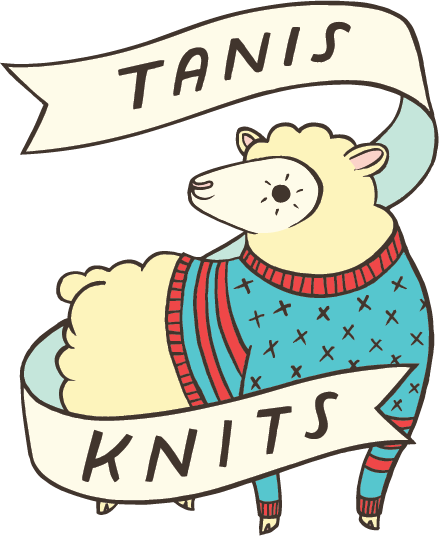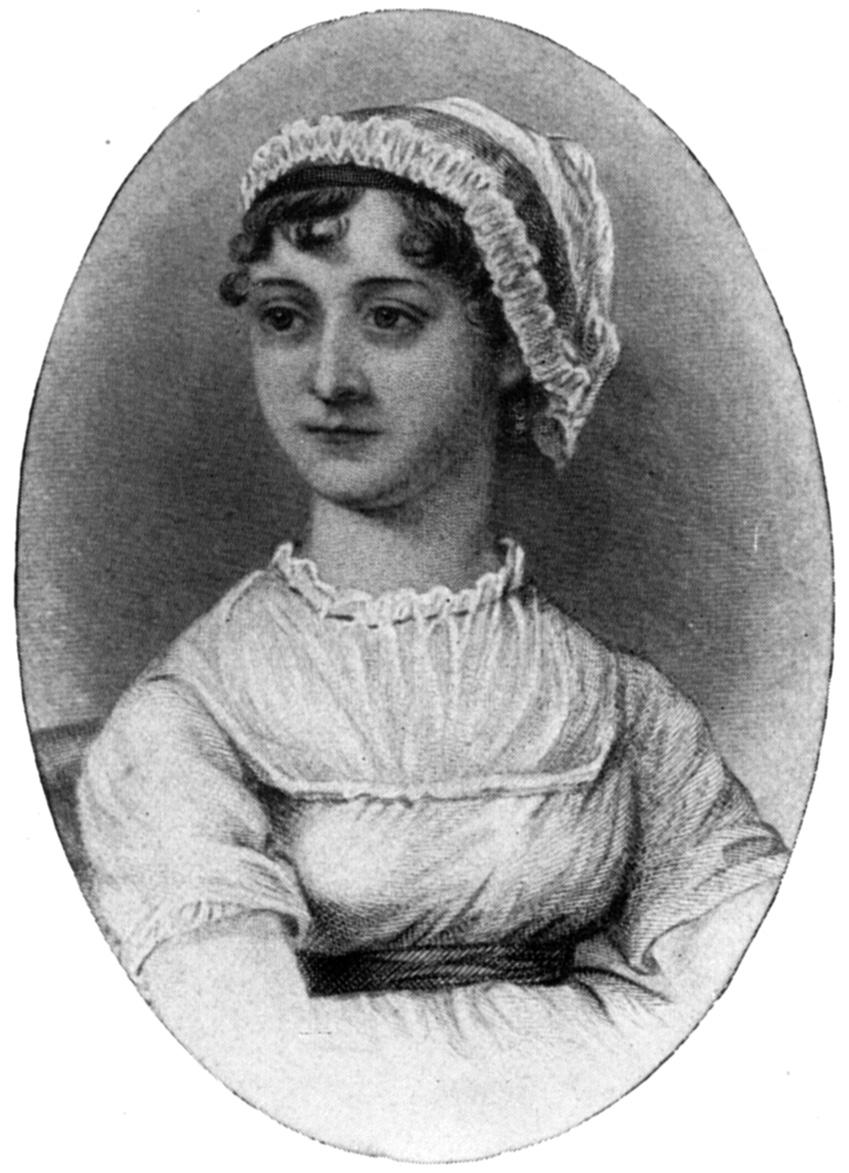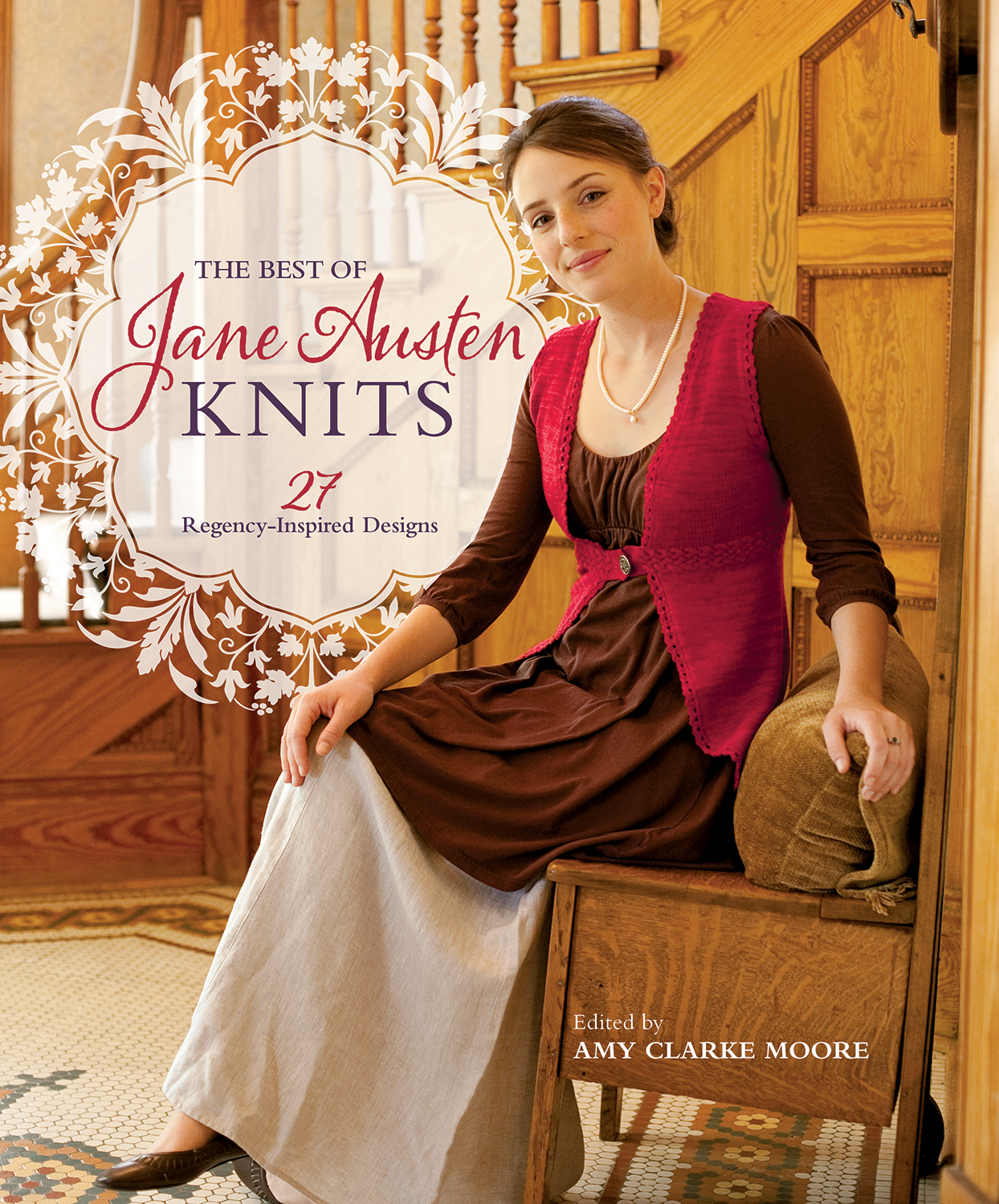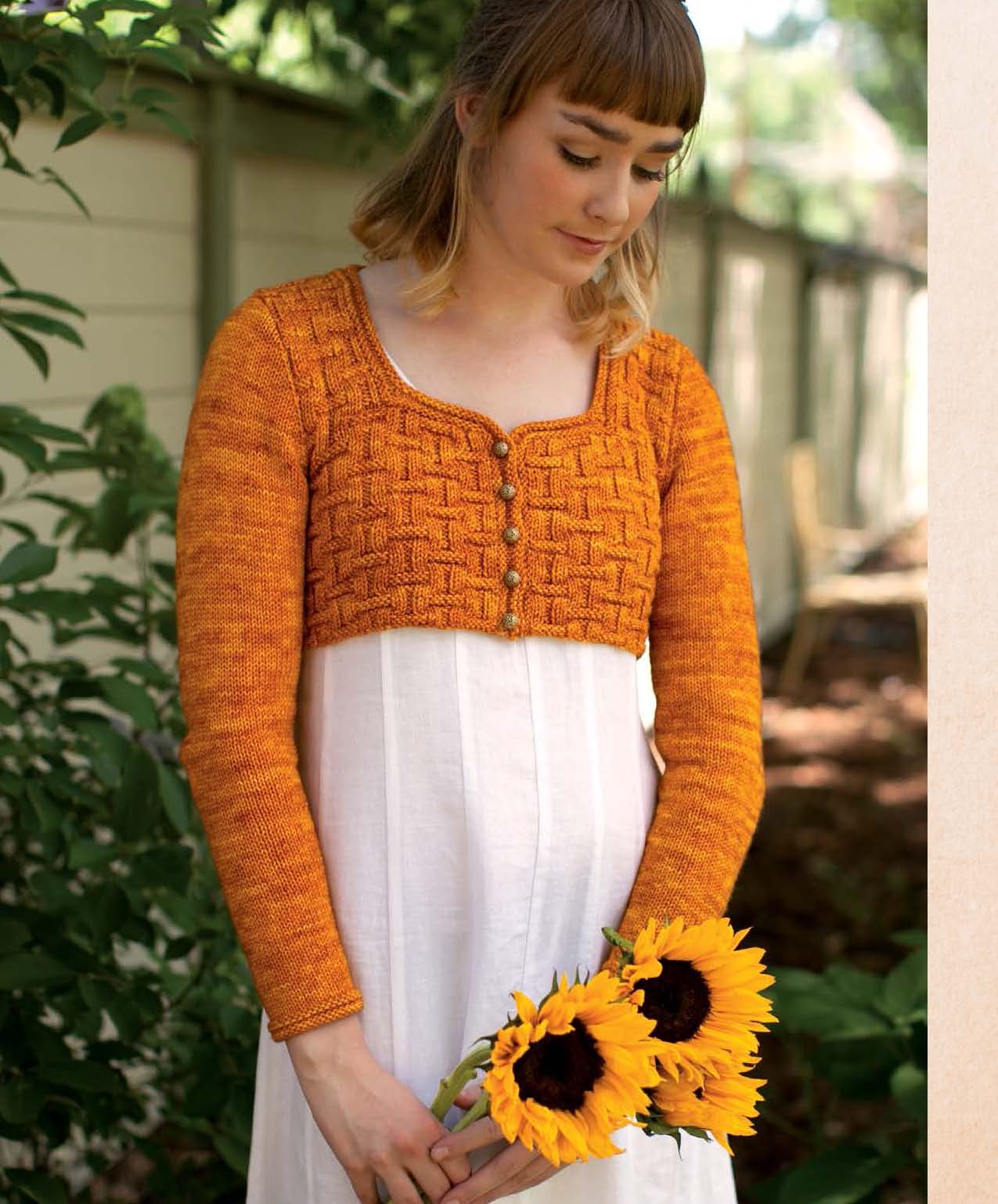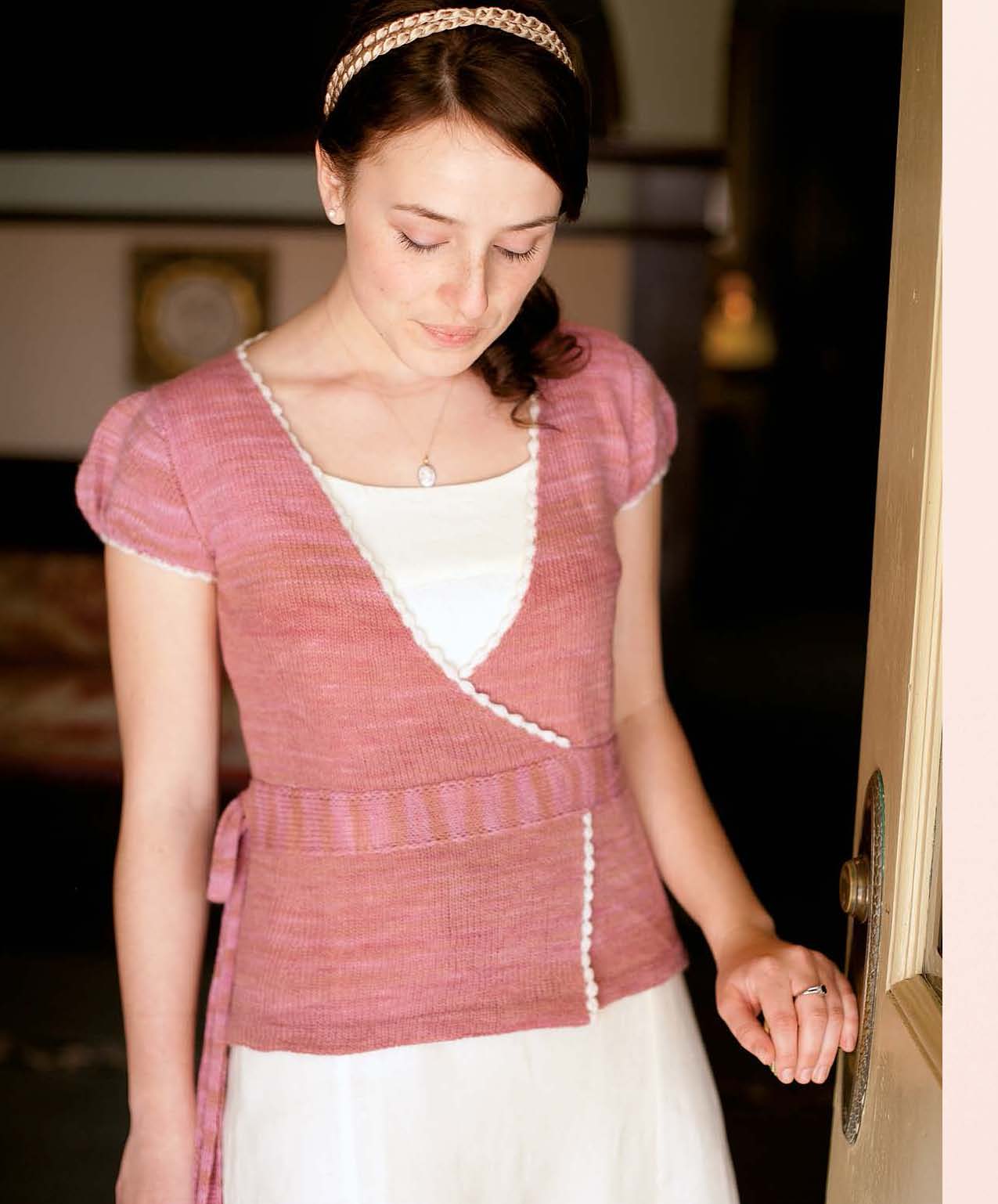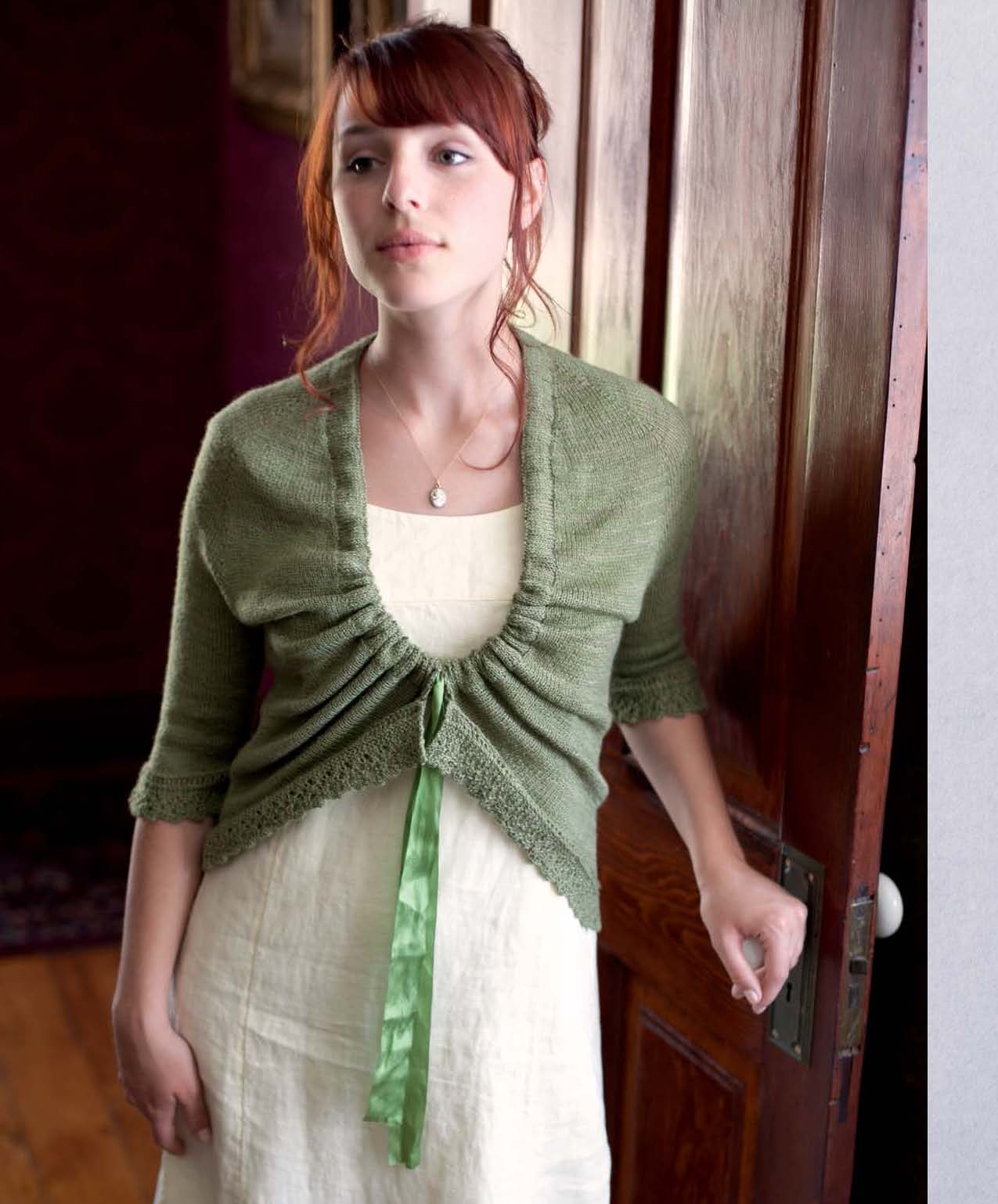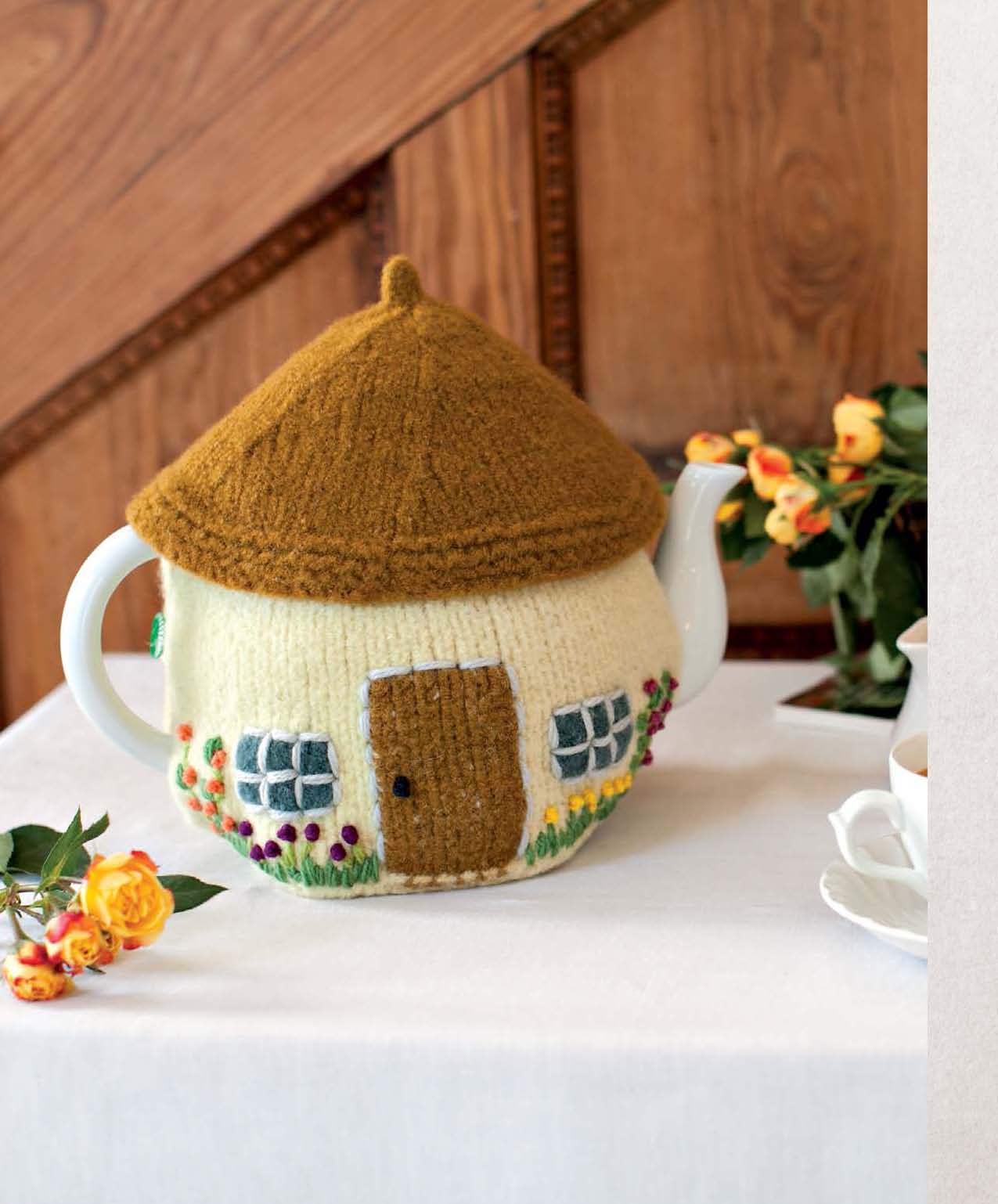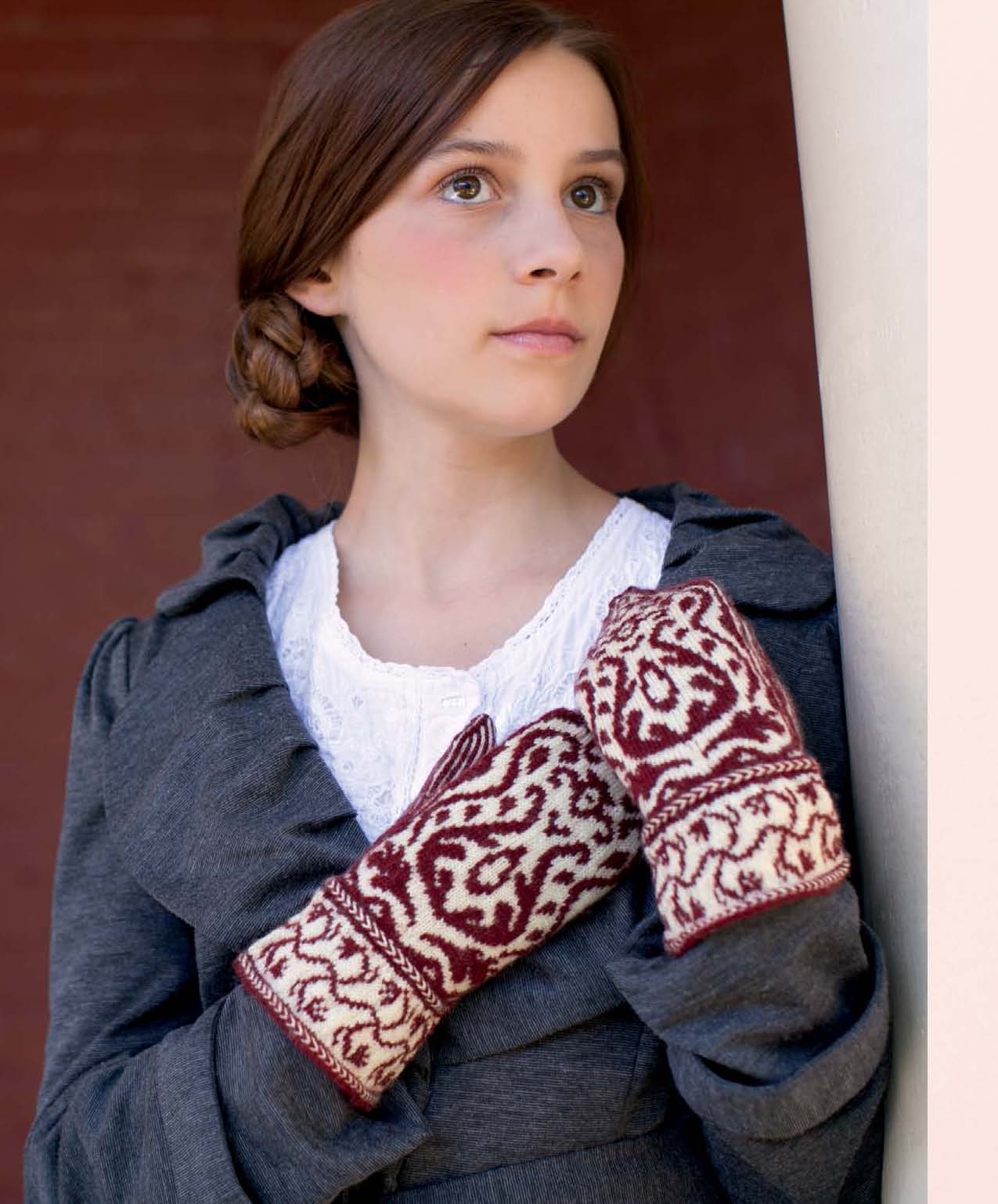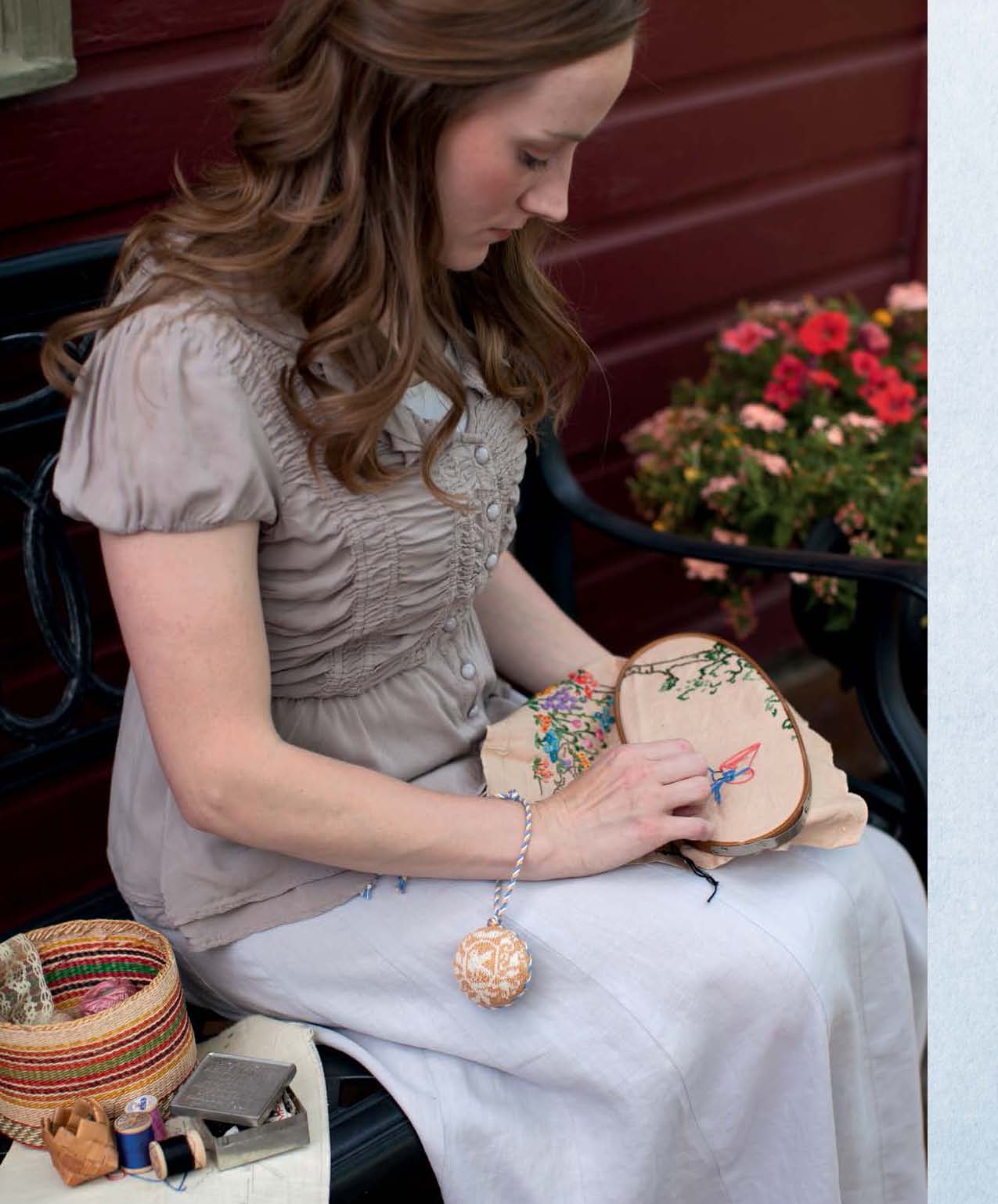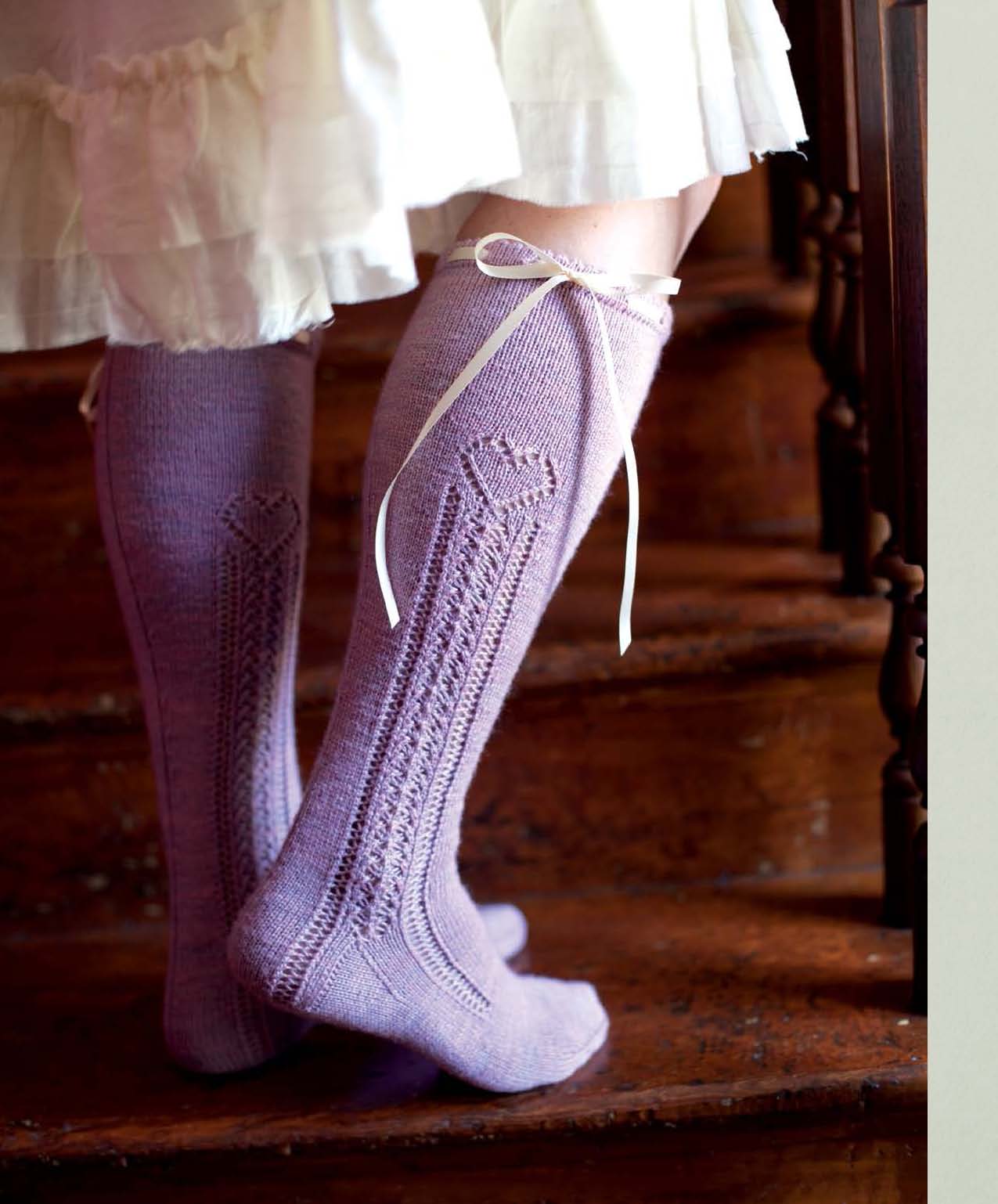UPDATE 2/6/2015: Congratulations to Monica! Check your email.... :) --------------
What is it about Jane Austen? Why is she so beloved so many years after her works were first published? Why have her novels been brought to life in so many different incarnations on both the large and small screen? Her books reprinted over and over? I've always been a fan of her work, Sense and Sensibility (1811) being my favorite, followed closely behind by Pride and Prejudice (1813). Her strong female characters, problems back then that have similarities to our modern-day lives, the pressures of being a woman... It's interesting to lose yourself in a book written over 200 years ago and find a character dealing with issues similar to your own. I imagine she must have been smart-as-a-whip, have a great sense of humor and felt trapped in the day-to-day life of a woman living in the late 1700's and early 1800's without the freedom we have today.
Like so many knitters, I was ecstatic to see the first issue of Jane Austen Knits hit the shelves of my LYS in 2011. 200 years after my favorite Austen book was published, suddenly we have something new to celebrate her life with! Of course the special edition magazine was a success, and since the first issue came out, we've had 4 more. Interweave decided to pull together a collection from the first 4 issues and put them into a new book, The Best of Jane Austen Knits. Editor Amy Clarke Moore was kind enough to sit down with me and answer a few Austen-themed questions for us.
Tanis Gray (TG): I loved the approach of your introduction in the book pairing knitting with literature. Can you expand on that idea?
Amy Clarke Moore (ACM): Knitting and literature go well together because they can be both meditative and quiet activities, but also provide a way to connect with others. When you are reading or knitting you can make space for yourself, go inward for a bit, and relax. But knitting and literature can also provide a way to commune with people—by reading the thoughts of another person and discussing those ideas with friends, and through the making of objects for the people you love or gathering to knit with friends. Knitting and literature are both good for nurturing yourself as well as connecting with your community—both things this world needs more of.
TG: Why do you think so many people today still turn to Jane when they want to read a good book, especially women?
ACK: Jane Austen’s work has proven to be timeless—it is still relevant two hundred years later. Her work has so much depth that we’re still mining the riches she gave us in only six completed novels and a few fragments. I find it is her ability to capture the nuance of human relationships and the importance of the seemingly small moments that make up a life the most compelling part of her work. That said, I’m captivated by all that I’ve read about her allusions to local and global politics in the subtlest ways that are mostly missed by todays readers, but would have been obvious to her contemporary readers. She was absolutely brilliant—using the guise of a romance novel to voice her opinions in a time when she wasn’t allowed to speak freely because she was a woman. I don’t know if this is why so many women gravitate to her work, but I know plenty of men who also enjoy it.
TG: With 5 editions of Jane Austen Knits, how did you narrow down which projects would be showcased in the book? Was it driven by popularity or do these projects speak to you for other reasons?
ACM: We drew from the first four issues of Jane Austen Knits because the fifth issue hadn’t been made yet when the book was in production. It was hard to select the projects for the book from the many that had appeared in the first four issues, but we wanted to bring together the projects that best illustrated the concepts: capturing an aesthetic inspired by Jane Austen’s writing and the Regency era but wearable today, representing a range of garments for women, men, and children for the mostly skilled knitter (but offering something for beginning knitters as well), and drawing on the wide variety of knitting techniques offered in the magazines.
TG: Do you have a favorite project in the book (mine is the Barton Cottage Shrug!)?
ACM: I made my own version of the Barton Cottage Shrug using my own handspun yarn—I love wearing it (you can see it on Ravelry)! It’s hard to pick a favorite, as I love so many of them for a variety of reasons—for capturing the concept in a book beautifully, for the use of a knitted stitch, for the way a pattern showcases a yarn . . .
TG: I really enjoyed the articles peppered in throughout the book (about where Jane lived, knitting in her writing, how accomplished she was and dressmaking) that really gave modern knitters a brief glance into life during Jane’s time. Do you think you would have liked living then?
ACM: I think there are aspects of living in England during the Regency era that I would have enjoyed, but others that would have been hard to endure as a modern woman who has had the freedom to think, work, travel, and write as I see fit. I enjoy drinking tea, spinning, and knitting while watching my favorite adaptations of the books and imagining life back then without having to live with the realities of no indoor plumbing, constraining social strata, and frightening medicine.
TG: This collection has a nice mix of garments and accessories and it was shot with an “English countryside” look. Can you tell us about the photo shoots and working behind the scenes?
ACM: We were working on a shoestring budget, which required a lot of creativity for photo shoots. We found nearby museums, book and antique stores, B&Bs, and also asked to use the yard of friends with amazing gardening skills for our locations. Working several months in advance of the publication date (meaning that we were shooting the Spring issue in December and the Fall issue in June) and recreating an English Garden in the arid climate of Colorado was not always easy, but it was fun to come up with solutions that helped set the stage. To work within our budget, we did not hire professional models, but asked people we knew to model. In one case, I spotted a young woman buying coffee at the coffee shop across the street from our offices and worked up the nerve to ask her to model for us! She was thrilled for the opportunity and did a great job.
For the clothing under the knitted garments, in many cases we were able to find great items at local thrift stores. Liz Good, the managing editor of Jane Austen Knits was particularly skilled at finding perfect thrift store finds. Ann Swanson, our photo stylist, was able to make each image look perfect, and our photographer, Christa Tippmann was especially gifted at using natural light to create a mood. I was lucky to work with such a great team. I hope the new editor of Jane Austen Knits, Anne Merrow, had as much fun as I did working with this team—they are all so talented.
My favorite part of the photo shoots was gathering the props—I would scour used book stores for copies of Jane Austen’s books with interesting covers, as well as literature that Jane might have read. I also brought in a lot of the china my grandmother gave me to use as props (as well as her opera glasses). I also enjoyed introducing other crafts as part of the supporting props—such as spinning, embroidering, and sewing.
TG: How did putting the book together differ from putting together the special editions of the magazine?
Working on the magazine issues was an exhilarating experience—I don’t think I ever had so much fun working on a concept for a magazine as I did with Jane Austen Knits. Creating the balance between modern-day knits and honoring the traditions from 200 years ago in England was challenging in the best of ways.
I left Interweave in January of 2014 to pursue a new career in Montessori education—so most of the work that I did on the book was pretty minimal—I wrote an intro and made suggestions for what articles and projects should be included, but the amazing and talented book staff at Interweave did the bulk of the work reformatting the magazine articles for the book pages.
TG: What do you think Jane Austen would think, seeing so many wonderful knitted garments and accessories inspired by her writings?
ACM: I imagine she’d find it a bit odd, but amusing. She’d have something witty to say about it, that’s for sure.
TG: Which is your favorite Austen novel?
Pride and Prejudice as it was the first one I read (in high school) and at first despised (because I tried to read it in one evening), and then later fell in love with and have read so many times (nearly every year) since then.
TG: Jane died quite young (41) from tuberculosis in 1817. Do you think her work is more popular today or back then?
ACM: I’m not sure folks have decided for sure that she died of tuberculosis—I’ve heard a number of theories as to the cause of her death (illness, for sure, but new theories as to what illness come out nearly every year). While she did have some recognition while she was alive for her writing, it has gained popularity as the years go on. I anticipate that it will continue gathering followers as the years progress. I can’t imagine Jane Austen ever becoming irrelevant.
TG: If you picture Jane in your mind knitting by the fireside, what is she making?
ACM: We know she must have knitted (as the daughter of a clergyman and a spinster, she would have had to knit to help clothe her family)—and I hope she took pleasure in it, though I imagine it was her writing that occupied her mind whenever she had to sit down to make things. I imagine her making socks for her many brothers and mittens for her beloved sister, Cassandra.
Thanks, Amy! The new book is a truly grand collection of projects from the first 4 issues of the magazine. Now for the fun part! One lucky reader will win a copy of The Best of Jane Austen Knits. Answer this trivia question (open to US residents only) in the comments section.
What was the order of Jane Austen's 6 completed published works in chronological order?
One winner will be chosen at random on Friday, February 6th.
